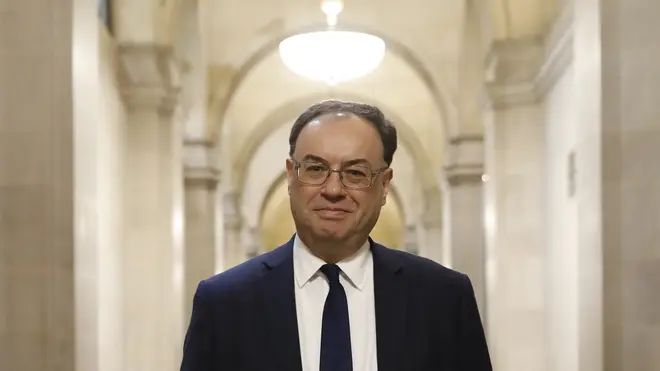
Ian Payne 4am - 7am
8 March 2021, 12:04

Governor of the Bank of England Andrew Bailey also highlighted EU research which showed some benefits from negative interest rates during a recovery.
The Governor of the Bank of England has said that the long-term hit to the economy from the Covid-19 crisis could be smaller than in past recessions.
Andrew Bailey said that while gross domestic product (GDP) is expected to be 12% lower at the end of March than it was before the pandemic started, the extension of Government support would help mitigate some of the worst effects.
“There are reasons to believe that so-called long-term scarring damage to the economy will be lower than in past recessions,” Mr Bailey said at an event hosted by the Resolution Foundation think tank.
He said that unprecedented levels of fiscal support would help to limit the amount of scarring, and added that the UK’s labour force was more mobile than in the past, and will find it easier to switch to new jobs.
This is very different to past major shifts, such as during the 1980s when the level of skill involved in a job limited where people could go if their industry was struggling. Many jobs were then also geographically bound in a way they no longer are.
Mr Bailey said that extending the furlough scheme to September, beyond the date when the Covid-19 restrictions on businesses are expected to be lifted, would likely cap a sharp increase in unemployment that had previously been expected.
However, the bank has not done its official assessment on unemployment yet since the Budget last week. Its forecast in February was that unemployment would peak at 7.8% later this year.
“I would expect we would have a lower profile of unemployment certainly in the near-term, and I probably think it would be lower throughout, but we haven’t done that work yet so I reserve judgment,” Mr Bailey said.
Speculation has raged throughout the crisis whether Mr Bailey and the rest of his colleagues on the bank’s Monetary Policy Committee (MPC) would decide to slash interest rates to below zero for the first time.

The bank’s base rate was cut to 0.1% – a historic low – early in the pandemic but the MPC members remain unconvinced that it should be cut to negative.
A negative rate could result in customers being forced to pay to keep their money in a bank account, although those with higher amounts in their accounts, such as companies, are more likely to see the impact.
Mr Bailey pointed to work from the European Central Bank which suggests that negative rates could be a good way to help unlock investment during a recovery, rather than during the crisis itself.
“They actually used them in the recovery from the euro area crisis, not actually in the crisis. It’s also interesting that no central bank that’s currently using negative rates has made it more negative during the last 12 months, which I don’t think is an accident,” Mr Bailey said.
He added: “They have argued in their research work that particularly because the use of negative rates is concentrated on corporate deposits and wholesale deposits, not retail deposits, that it may have some impact on stimulating investment in a recovery.”
A negative rate is a tool that is useful to have, Mr Bailey said, but how it is used depends on the circumstances at the time.
“There are probably many reasons why investment has been relatively lower in this country, and if we don’t tackle them now we really are going to make recovery from this crisis difficult,” he said.